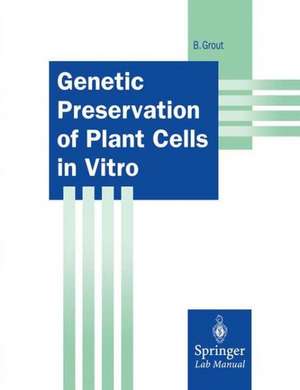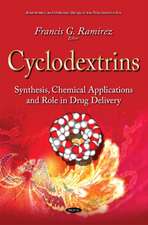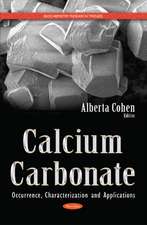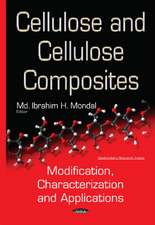Genetic Preservation of Plant Cells in Vitro: Springer Lab Manuals
Editat de Brian Grouten Limba Engleză Paperback – iul 2012
Din seria Springer Lab Manuals
-
 Preț: 385.84 lei
Preț: 385.84 lei -
 Preț: 362.59 lei
Preț: 362.59 lei - 18%
 Preț: 973.69 lei
Preț: 973.69 lei - 15%
 Preț: 695.85 lei
Preț: 695.85 lei - 18%
 Preț: 997.40 lei
Preț: 997.40 lei -
 Preț: 385.84 lei
Preț: 385.84 lei -
 Preț: 382.18 lei
Preț: 382.18 lei - 24%
 Preț: 1045.10 lei
Preț: 1045.10 lei - 15%
 Preț: 641.20 lei
Preț: 641.20 lei - 18%
 Preț: 939.33 lei
Preț: 939.33 lei -
 Preț: 381.43 lei
Preț: 381.43 lei - 15%
 Preț: 639.25 lei
Preț: 639.25 lei -
 Preț: 376.68 lei
Preț: 376.68 lei - 18%
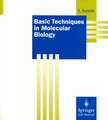 Preț: 1822.40 lei
Preț: 1822.40 lei - 18%
 Preț: 953.82 lei
Preț: 953.82 lei - 15%
 Preț: 645.14 lei
Preț: 645.14 lei - 15%
 Preț: 689.93 lei
Preț: 689.93 lei - 23%
 Preț: 821.59 lei
Preț: 821.59 lei - 19%
 Preț: 588.70 lei
Preț: 588.70 lei - 5%
 Preț: 727.44 lei
Preț: 727.44 lei - 18%
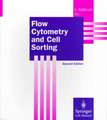 Preț: 1225.31 lei
Preț: 1225.31 lei - 15%
 Preț: 657.39 lei
Preț: 657.39 lei - 18%
 Preț: 949.73 lei
Preț: 949.73 lei -
 Preț: 386.99 lei
Preț: 386.99 lei - 15%
 Preț: 657.25 lei
Preț: 657.25 lei - 19%
 Preț: 555.63 lei
Preț: 555.63 lei -
 Preț: 380.63 lei
Preț: 380.63 lei - 18%
 Preț: 1226.11 lei
Preț: 1226.11 lei - 15%
 Preț: 649.22 lei
Preț: 649.22 lei - 15%
 Preț: 632.55 lei
Preț: 632.55 lei - 19%
 Preț: 584.77 lei
Preț: 584.77 lei - 15%
 Preț: 639.41 lei
Preț: 639.41 lei - 15%
 Preț: 644.82 lei
Preț: 644.82 lei -
 Preț: 390.25 lei
Preț: 390.25 lei - 18%
 Preț: 781.31 lei
Preț: 781.31 lei - 15%
 Preț: 644.63 lei
Preț: 644.63 lei -
 Preț: 382.36 lei
Preț: 382.36 lei -
 Preț: 363.12 lei
Preț: 363.12 lei - 18%
 Preț: 961.23 lei
Preț: 961.23 lei -
 Preț: 416.29 lei
Preț: 416.29 lei - 18%
 Preț: 783.35 lei
Preț: 783.35 lei - 18%
 Preț: 791.88 lei
Preț: 791.88 lei - 15%
 Preț: 675.22 lei
Preț: 675.22 lei - 23%
 Preț: 1311.58 lei
Preț: 1311.58 lei -
 Preț: 381.43 lei
Preț: 381.43 lei
Preț: 637.59 lei
Preț vechi: 750.11 lei
-15% Nou
Puncte Express: 956
Preț estimativ în valută:
122.02€ • 126.92$ • 100.73£
122.02€ • 126.92$ • 100.73£
Carte tipărită la comandă
Livrare economică 14-28 aprilie
Preluare comenzi: 021 569.72.76
Specificații
ISBN-13: 9783642489686
ISBN-10: 3642489680
Pagini: 184
Ilustrații: XI, 169 p. 22 illus.
Dimensiuni: 189 x 246 x 10 mm
Greutate: 0.34 kg
Ediția:1995
Editura: Springer Berlin, Heidelberg
Colecția Springer
Seria Springer Lab Manuals
Locul publicării:Berlin, Heidelberg, Germany
ISBN-10: 3642489680
Pagini: 184
Ilustrații: XI, 169 p. 22 illus.
Dimensiuni: 189 x 246 x 10 mm
Greutate: 0.34 kg
Ediția:1995
Editura: Springer Berlin, Heidelberg
Colecția Springer
Seria Springer Lab Manuals
Locul publicării:Berlin, Heidelberg, Germany
Public țintă
Professional/practitionerCuprins
1 Introduction to the in Vitro Preservation of Plant Cells, Tissues and Organs.- 1.1 Storage Techniques.- 1.2 Principles of Cryogenic Storage.- References.- 2 Minimal Growth Storage.- 2.1 Growth at Reduced Temperature.- 2.2 The Addition of Inhibitory Growth Regulators.- 2.3 The Addition of Osmotic Regulators.- 2.4 Combined Treatment.- References.- 3 Cryopreservation of Protoplast, Suspension and Callus Cultures.- 3.1 General Practical Considerations.- 3.2 Protoplast Cryopreservation by Slow Cooling.- 3.3 Cryopreservation of Cell Suspension Cultures by Slow Cooling.- 3.4 Cryopreservation of Callus Cultures by Slow Cooling.- References.- 4 Cryopreservation of Excised Meristems, Shoot Tips and Somatic Embryos.- 4.1 Meristem/Shoot-Tip Cryopreservation by Slow Cooling.- 4.2 Meristem/Shoot-Tip Cryopreservation by Rapid Cooling.- 4.3 Cryopreservation of Somatic Embryos by Dry Freezing.- 4.4 Cryopreservation of Somatic Embryos by Rapid Cooling.- 4.5 Cryopreservation of Somatic Embryos Following Dessication.- References.- 5 Storage of Free Pollen, Pollen Embryos and the Zygotic Embryos of Seed by Cryopreservation and Freeze Drying.- 5.1 Freezing Drying of Pollen.- 5.2 Pollen Cryopreservation.- 5.3 Cryopreservation of Pollen Embryos.- 5.4 Cryopreservation of Excised Zygotic Embryos.- References.- 6 Conservation of Algae.- 6.1 Serial Subculture.- 6.2 Cryopreservation.- References.- 7 Cryopreservation by Vitrification.- 7.1 Vitrification of Shoot Tips.- 7.2 Encapsulation/Dehydration Method.- 7.3 Vitrification of Cells and Protoplasts.- 7.4 Further Experiments.- References.- 8 Biochemical and Molecular Methods for Assessing Damage, Recovery and Stability in Cryopreserved Plant Germplasm.- A Biochemical Methods.- B Molecular Methods.- References.
Recenzii
"Each chapter is written as a "hands-on" practical guide and presents procedures that can be adapted to individual laboratory conditions and modified to best suit the particular material being preserved." Bioscope
